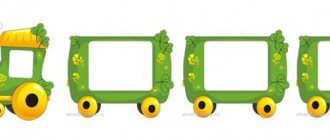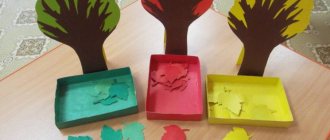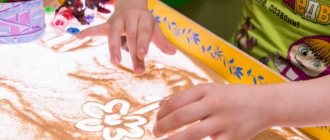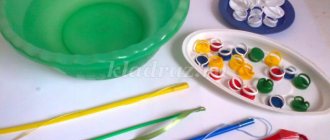Don't expect school to teach your child everything. Just as a mother teaches a baby the first steps, the basics of reading should be laid in the first years of life. You can’t start learning the alphabet from scratch - instill a craving for literature in your child in advance, before he goes to first grade.
Children are proud of their ability to read
Start with speech development
Before learning to read, a child must learn to speak. And the correctness of speech development directly depends on their environment. The more intelligent the parents, the more attention they pay to the younger generation, the easier it is for the child to develop.
From the first days you need to work with your baby on speech development
Starting the first communications with adults through hooting, the baby gradually tries to imitate the speech sounds that he hears every day. And if at first these are just individual syllables, then already from the age of 2 years of normal development the child can operate with simple sentences.
Further - more, the baby moves on to word forms. And the more actively the parents communicate with the child, the more talkative he will be (in a good way). The main help in the development of a child’s speech will be reading, i.e. books that adults will read aloud to their children.
Develop your baby's interest in reading
Naturally, a small child cannot read on his own. But you can accustom him to communicate with literature from the first years of his life. It is children's books that form the correct speech development of the baby. The more often a child sees a book in the hands of his parents, the more confidence he develops in it, and the faster over time the desire to learn to read independently appears.
Interest in reading develops in a playful way
Reading should be turned into a kind of ritual - fairy tales, nursery rhymes, lullabies are best perceived before bed. The clearer and more correct the adult’s pronunciation during reading, with emotional connotation, the more memorable the phrases the child will hear will be.
And the clearer the baby’s visual images will appear. And this will further help in learning to read. After all, the better a child thinks in images, the faster and easier he learns.
About the benefits of family reading
To develop children's skill, they should read fairy tales aloud from preschool age. The child must develop not just an interest in literature - the book must become a symbol of psychological “pleasure”.
Family reading develops children's interest in it
And in the future, even magazines and books standing on shelves (and not in the hands of parents) will be associated with positive emotions and attract the child’s attention. In other words, reading books to your child instills a love of literature for life, giving impetus to the fastest learning of independent reading.
In addition, reading to children promotes their spiritual unity with their parents, bringing joy to everyone. And the child develops a feeling of family comfort, which he associates with books. In a family where there is a cult of books, children quickly develop a desire to read.
Read with your children
The best way to prepare your child for independent reading is to read a book while sitting next to your baby. He should see the pages of the book on which the text is written. This will first allow you to visually get used to the letters that involve you in the world of the sacraments.
A child’s first books should be of high quality and bright
It’s not for nothing that the first children’s books are rich in colorful illustrations. With their help, you can perceive what you hear in images drawn in the pictures. And when the child goes to first grade and begins to put letters into words, familiar phrases will already be perceived figuratively, which will make it faster and easier to learn to read.
While reading a fairy tale or nursery rhyme, try to move your child’s finger over the letters so that the baby can see which word you are reading. Visual memory will help with proper learning in the future.
Teaching reading using the M. Montessori method
According to M. Montessori's method, reading begins with writing and, accordingly, preparing the hand for writing. An important component of the process is feeling the letters - thanks to tactile sensations, the child better remembers the image of the letter. When the baby remembers several vowel and consonant sounds and the letters representing them, you can try to compose words using the movable alphabet.
In the Russian language zone in Montessori children's classes, a lot of educational materials have been collected with the help of which a child can learn letters, master the operations of sound analysis and synthesis, learn to compose words and expand his vocabulary. Here are some exercises you can do with them:
- Preparing the hand for writing (shading, tracing);
- We feel the letters;
- We make a word from letters;
- We write the word (on paper or on a tray with semolina);
- Games with frame inserts;
- Letter dominoes;
- We select a picture for the word (and vice versa);
You can find a detailed analysis of Montessori exercises for teaching reading in the video:
How to properly teach a child to read?
The sooner a child is ready to perceive, the better - when he goes to 1st grade, he should master the basics of reading. Even if the baby goes to kindergarten, where he is taught using a special method, parents should also set aside time for joint activities.
How to approach the process itself correctly so that learning is easy? You cannot teach children by force - everything should happen in a playful way. When choosing a technique, you should also take into account the age at which training began.
It is necessary to develop the correct pronunciation of sounds
But in any case, you shouldn’t learn just letters - you should start with phonetic sounds. It will be easier for the child to associate the written symbol with the sound that he is accustomed to hearing.
Learning is easier if each lesson learned is repeated many times. From the moment you learn sounds to reading syllables, monitor your baby’s clear pronunciation of speech.
Stages of training
It is impossible to teach a child to read quickly without a special technique, as well as without an appropriate (consistent) systematics.
- Choose the right manual to teach your children. Recently, there are several options for primers on sale. Choose one that will be interesting to your child (you can go shopping with him). Even if there are fewer pictures there, it should be based on speech therapy techniques (for example, N.S. Zhukova’s alphabet).
Magnetic alphabet by N.S. Zhukova - When the manual is purchased, begin step-by-step learning of sounds:
– first learn all the vowels;
– then move on to mastering voiced hard consonants, paying attention to correct pronunciation;
- then comes the turn of dull sounds;
– leave the sizzling ones for last.
- Repeat each sound you learn before starting to learn the next one. “Repetition is the mother of learning” - this phrase should become the guiding thread of the entire learning process.
- In parallel with studying sounds, begin to form syllables (and the very first one can be “ma”, which will be close and sincere to the child). Read the syllable together with your baby, as if singing it. The child should have the feeling that the consonant sound seems to be striving for a vowel. This will help you pronounce sounds in pairs.
- Do not try to immediately form the learned syllables into words. Let the child first understand the principle of combining vowels and consonants in pairs. Consolidate your knowledge on simple syllables, gradually moving on to difficult to pronounce ones.
- Having taught your child to form syllables where the consonant sound comes first, proceed to a more complex structure where the vowel comes first (“om”, “ab”, etc.).
- Having become comfortable with individual syllables, transfer children to reading simple words. Start with those that consist of 2 syllables, then 3-syllables. But the first words that a child reads should be familiar to him and associated with understandable images.
Reading training
Primer
(ABC) is the first book with which one begins to learn to read and write. Computer training programs are being introduced into modern life everywhere. We have developed a well-illustrated online version of the Primer for children. When developing the Primer, time-tested developments from the Adaline psychological center were used. In our primer, each letter has its own colorful image, so children easily remember the letters and never confuse them. The structure of our online primer is similar to that of Nadezhda Zhukova, the best, in our opinion, modern primer for children. The primer is based on the generally accepted approach to teaching reading and is supplemented by the author’s methods of teaching reading by syllables. Go to the Primer exercises. Additionally, we recommend the NEW ABC BOOK (works on all types of computers, adapted to mobile devices).
New video - ABC book on YouTube.
Dear parents and teachers! We present to you a new product - a unique VIDEO BOOKER. What it is? These are fascinating video lessons that will allow your child to learn letters in a playful way, learn to read syllables and simple words. Much attention in the video primer is paid to the development of phonemic hearing. The sequence of letters completely coincides with the presentation of material in N.S. Zhukova’s primer. Your child will remember all the letters and easily learn to read simple words and sentences. Go to video primer
Development of phonemic hearing.
In this article we will tell you about games that prepare a child for learning to read and write. We will talk about special exercises for the development of phonemic hearing in preschoolers. A preschooler with well-developed phonemic awareness will have a much easier time mastering reading and writing. We recommend the following games and exercises for the development of phonemic awareness... Go to games and exercises for the development of phonemic awareness
Letters. Games with letters. Exercises for repeating and memorizing letters.
The exercises and educational games from this section will help you repeat and consolidate the material covered in the Primer. Our educational games will allow a preschooler to remember the image (writing) of printed letters of the Russian alphabet, teach them to identify sounds in words by ear and select words that begin with a given letter. Exercises and games for repeating and memorizing letters have different levels of difficulty. Some children cannot complete all tasks the first time. You can skip the task that caused difficulty and return to ... Go to games with letters
Syllables. Lessons on reading syllables.
On the pages of our website you will find a large number of materials for teaching children to read syllables and word-by-syllable reading. Unfortunately, most alphabets and primers that are sold in stores do not have guidelines on how to teach reading syllables. The first pages of such publications introduce children to letters, and then exercises are given for reading syllables and reading words syllable by syllable. Often exercises for reading syllables and syllable reading do not have any explanations. But how can a child read a syllable? Our Primer contains a video with guidelines for composing and reading syllables. There are several types of tasks and exercises in the lessons on reading syllables. The tasks and exercises for the lessons use syllables well known to the child... Go to lessons on reading syllables
Learning to read words
It is recommended to move on to lessons on learning to read words after classes using our Primer and the assignments in the subsections “Games with letters”, “Lessons in reading syllables”. The ability to read words correctly is not enough for a child. He must understand the meaning of what he read. In the previous exercises in the section “Teaching reading "Much attention was paid to the sound analysis of words and syllables, the development of phonemic hearing. The tasks of the subsection “Learning to read words” are based on six types of different techniques: linking a word to a visual image; linking a visual image to a word; correlating individual words with groups of visual images combined together by meaning; study of the concepts of part and whole; search for hidden words in the table of letters; replacing a letter in a word in order to change the meaning of the word. Go to lessons on reading words
Games for learning to read. Book-toy
If your little student already reads two- and three-syllable words more or less well, then you can move on to reading simple sentences. But, you must admit that it is very boring to read banal phrases like “Mom washes the frame.” How can you make the process of learning to read more fun? What kind of reading game can you come up with so that the child himself is interested in learning to read? We suggest you make a special game for him to teach reading. Making a book - a reading toy - is not at all difficult. You will need a spring notebook or a regular sketchbook. Pages of a notebook (album) using... Go to the description of the toy book
Teaching reading to preschoolers
We learn to read online together with entertaining games from the “Teaching reading to preschoolers” section of our website. Here you will find 120 games that teach reading online, divided into 20 lessons for convenience. Online games for learning to read are presented in order of increasing difficulty: first games with letters, then games with syllables, then games with words and games with sentences. Lessons on learning to read also include exercises aimed at developing the skills necessary for learning to read: phonemic awareness, spatial thinking, attention, memory, visual perception. All training is conducted in a fun way. Go to lessons
Fascinating "Zvukar"
Dear parent! If you have recently started teaching your child to read, then this information will be useful to you. When studying with your child using the ABC book, you learn letters with him and teach him to read syllables. To make it interesting for your little student to learn to read, we have created the “Fascinating Sounder”. “Fascinating Sound” is a collection of bright colorful photographs with captions. Moreover, these signatures are very simple, consisting of one repeated letter or syllable (interjection). Knowing just a few letters, the child will already be able to study according to our manual. To do this, he must sequentially examine the proposed photographs and read the captions to them. But not just read, but definitely with... Go to the fascinating sound
Correct pronunciation is the key to quick learning
Do you know how to teach a child to read quickly? Let him sing every sound and syllable he learns, but do it clearly. When you move on to pronouncing words, at first the syllables should be sung separately, with each subsequent time shortening the gaps between them. And ultimately, the entire word must be sung in one breath.
Singing sounds promotes speech development
But so that reading in children is not associated only with singing, the consolidation of the material should take place in normal pronunciation, with clear pronunciation of sounds. At the same time, when you move on to reading sentences, teach your child to take the correct pauses before punctuation marks.
Books on the topic
There is no way to do without books and collections of texts when teaching reading at home. Please take a look at the following collection of useful tutorials.
Fedina Olga and Sergey “How to teach a child to read”
Textbook for preschoolers from 4–5 years old. The authors of the methodology took as a basis the syllabic method, which, according to parents, is the most effective and easiest way to teach reading. The book comes with useful tips for conducting classes; the lessons are divided into blocks, each accompanied by bright pictures.
Uzorova O. V., Nefedova E. A. “100 educational texts for teaching children to read”
The collection of texts is suitable for preparing six- and seven-year-old children for school. The educational material is accompanied by entertaining tasks and exercises for developing horizons, memory, attention, and fine motor skills. For ease of reading, words in the text are divided into syllables by vertical bars. Short stories are dedicated to the animal world, fish. There are coloring pages at the beginning or end of the text.
Baranova E. E., Razumovskaya O. K. “How to teach your child to read”
The collection of tasks is suitable for children aged 4–5 years. The authors use the syllabic method of teaching reading and invite children to play train with letters. You need to cut out a paper toy from a book yourself, put cards with letters in it and play with syllables. Classes are held in a playful way, so information is remembered quickly and easily.
Zhukova N. S. “Primer”
The textbook is based on the traditional syllable-by-syllable reading method. You can start lessons without knowing the sounds and letters. Learning the alphabet goes parallel to the formation of the skill of putting letters into syllables. The book is written in large print and illustrated with bright pictures. Zhukova’s primer is recommended by the Ministry of Education of the Russian Federation and has been used in kindergartens and development centers for more than 10 years.
When is the best time to start training?
At what age should children be able to read is a question many parents ask. This, first of all, depends on how psychologically prepared the child is for learning. But it should definitely be said that school should not begin immediately before school, when children are going to 1st grade.
Children can begin to be taught at the age of 3 years, if the child himself expresses a desire to do so. But you shouldn’t force them to sit down with books - this may discourage them from further learning.
The most optimal receptive age at which to prepare for 1st grade is 5 years. And in parallel with reading, children should be taught writing (for now only in printed letters), which will help them consolidate their reading skills.
How do you know when your child is ready?
To understand how to teach a child to read, you must first decide whether the child is ready for such learning. To do this, first test the degree of development of the child.
Make sure your child is ready to learn
- If children are already speaking in sentences, they are ready for the learning process.
- The development of phonetic hearing is an important factor. Correct perception of sounds, their differences and the ability to operate with them will help you quickly and easily teach your baby.
- A child who speaks incorrectly is not able to quickly learn to read, because... poorly perceives those phonetic sounds that he himself pronounces.
- If children do not have developed imaginative thinking, it will be difficult to teach them to read quickly - the process will turn out to be purely mechanical. And in the future, the procedure itself will be too tedious and uninteresting for the baby.
- The child must have the basics of logical reasoning, which allows him to compare facts in the learning process. Teaching reading by matching pictures and words
Training using the Nikitin method
Classics of Russian education, the Nikitins' spouses completely moved away from traditional teaching principles, putting forward their own instead. They believe that children should be given complete creative freedom in the classroom. Only then will they become interested in learning.
There is no need to limit the independence of children - they must do all the work themselves. The third rule is a combination of mental exercises and physical exercises (i.e., learning in a playful way).
Involve your child in joint activities - for example, you can prepare study guides together. And then the baby will perceive the material easier and faster. But the main incentive for successful learning is praise for even the most insignificant victory. And you should never focus on mistakes.
Educational toys of the Nikitins
Here are the basic principles by which the Nikitins taught their children (and they can be applied to children 3 years old, 5, and 7):
- You cannot impose a specific learning program on a child - he himself chooses in the form of which game he is more interested in learning letters.
- There is no need to explain the course of the game to your child. Make your studies seem like a fairy tale, where each participant has their own role.
- In the first stages of play-learning, adults are active participants. In the future, when the child gets used to it, he will be able to continue classes on his own.
- A learning child should always be unobtrusively given tasks that will become more difficult at each new stage.
- Don’t dare tell your child – teach him to think for himself.
- If it is difficult for your child to cope with a new task, do not force him - take a step back and repeat what you have learned.
- If you notice that your child has lost interest in the game, or has reached the limit of his capabilities (temporary), stop training for a while. Get back to studying when your baby asks. And he will definitely do this, because... all children love to play.
Nikolay Zaitsev – teaching innovator
Traditional teaching based on the “phonemic-verbal” principle enslaves the freedom of speech of the child being taught and forms complexes in him, inhibiting his development - this is what teacher Nikolai Zaitsev believes.
He developed his own unique technique, more like a game than a lesson. Children move freely around the classroom (room). At the same time, they can jump, run, etc. You can master the educational material in any position - in motion or sitting, lying down. And this should start earlier - from about 3 years old.
Zaitsev cubes
All manuals are posted on walls, boards, cabinets, and tables. Usually this is a set of cardboard cubes. They are of different sizes and different colors. Some faces depict single letters, others – syllables (both simple and complex), and still others – consonants with a soft or hard sign.
Previously, the cubes can be in the form of blanks, which the teacher glues together with the children. In this case, special fillers should be placed inside:
- It is better to put sticks (wooden and plastic) into cubes with dull sounds;
- for ringing sounds, metal bottle caps are suitable;
- Bells will be hidden inside the cubes with vowel sounds.
Training using the Zaitsev method
Cubes should differ in size (both single and double). For soft warehouses - small, for hard ones - large. Color solutions also play a certain role here - each warehouse has its own shade.
In addition to cubes, tables are also used as aids, where all known warehouses are collected. This allows the child to see the entire volume that is to be studied. And this makes the teacher’s job much easier.
Memorizing letters by association
Another point that makes it quite easy to master reading is writing. It must run parallel. Before voicing the sounds being studied (not letters), the child himself must learn to translate them into signs. This can be done in various ways: moving along a sheet of paper with a pencil, across a table with a pointer, or laying out cubes.
Various teaching methods
There are constant debates among teachers about how to properly teach a child to read and what methodology to use. And there are quite a lot of them, and each has both its fans and opponents.
Book cover by Masaru Ibuki
For example, Masaru Ibuki’s motto in education is the phrase known to most: “After 3 years it’s too late.” The Japanese teacher bases his methodology on the belief that children under the age of 3 are the most susceptible to learning, during the period of formation of brain cells.
The method of Pavel Tyulenev, who created his “Mir” system, is also similar. Its main idea is to have time to reveal the child’s potential. The teacher believes that one should start from the first minutes of birth. In his opinion, children can learn to read and write before they can walk.
Pavel Tyulenev's method
But no matter what methods of teaching a child have been developed (according to Montessori, Froebel, Lupan, etc.), all teachers agree on one thing - learning should take the form of play and be based on love for children. Knowing how to teach your child to read quickly, you will succeed.
Answers to frequently asked questions
How long does it take to teach a child to read?
Learning to read from scratch can take 6-8 months with a 4-5 year old child. An adult child, 6–7 years old, masters the skill faster, in 3–6 months. If you attend classes at a development center, a tutor, and read additionally at home, the period is reduced to 2–4 months.
Although in this video you can get acquainted with the real story of how a child was taught to read syllables in 2 hours.
How to teach reading if a child doesn’t want to?
A categorical refusal to study with books, tables, and cubes can be overcome by increasing motivation. Interest a reluctant woman in a bright book on her favorite topic, tell her why it is useful and necessary to be able to read. Look at pictures in books every day, read in the evening, during the day, discuss the plot.
When the first signs of interest appear, try playing with letters, solving puzzles, and using coloring books.
Can a child learn to read on his own?
This option is possible if there are older children in the family. The kid watches homework being done and begins to imitate the school students. When it turns out that the baby has learned the letters himself, parents only need to speed up the process a little.
Buy an ABC book, give some theory, apply several speed reading methods. If a preschooler is inclined to self-education, is diligent, and will show good results.
Should educators teach children to read?
Reading lessons are not included in the mandatory kindergarten curriculum. Teachers in the preparatory group can give a small amount of information about sounds and letters.
Reading is taught in elementary school. The exception is specialized or private kindergartens, where parents pay for additional classes in preparation for first grade.







